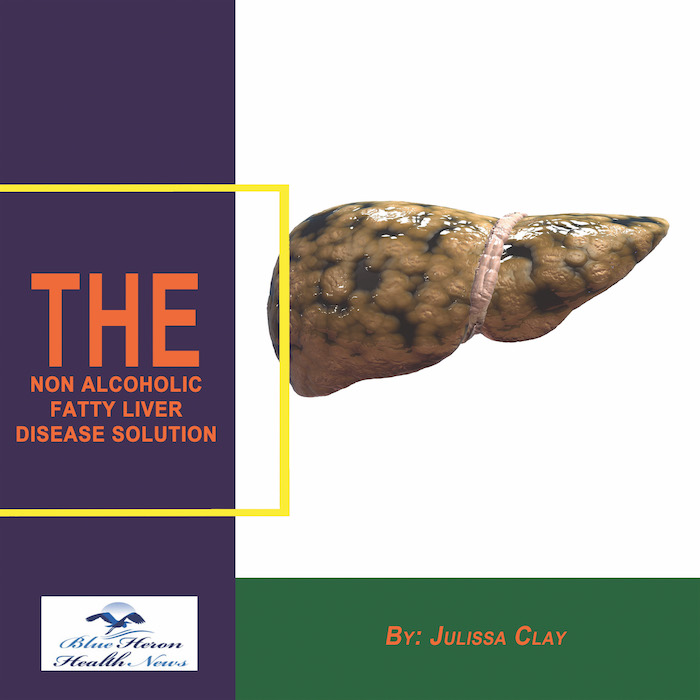
The Non Alcoholic Fatty Liver Strategy™ By Julissa Clay the program discussed in the eBook, Non Alcoholic Fatty Liver Strategy, has been designed to improve the health of your liver just by eliminating the factors and reversing the effects caused by your fatty liver. It has been made an easy-to-follow program by breaking it up into lists of recipes and stepwise instructions. Everyone can use this clinically proven program without any risk. You can claim your money back within 60 days if its results are not appealing to you.
How is fatty liver disease diagnosed?
Fatty liver disease (FLD) is typically diagnosed through a combination of medical history, physical examination, lab tests, imaging studies, and sometimes liver biopsy. The goal is to confirm the presence of fat accumulation in the liver and assess its severity. Here’s how fatty liver disease is commonly diagnosed:
1. Medical History and Physical Examination
- Risk Factors: The doctor will ask about risk factors such as obesity, diabetes, high cholesterol, hypertension, alcohol consumption, and any family history of liver disease or metabolic conditions. These factors increase the likelihood of fatty liver disease.
- Symptoms: Though fatty liver disease often has no symptoms, if present, symptoms like fatigue, abdominal discomfort, or a feeling of fullness in the upper right abdomen might be noted.
- Physical Signs: In some cases, the doctor may notice enlarged liver (hepatomegaly) during a physical examination.
2. Blood Tests
Blood tests are commonly used to assess liver function and check for signs of liver inflammation or damage.
- Liver Enzymes: Tests for liver enzymes (such as ALT and AST) help assess whether liver cells are being damaged. Elevated levels of these enzymes can suggest liver inflammation, which is often associated with non-alcoholic fatty liver disease (NAFLD) or non-alcoholic steatohepatitis (NASH).
- Lipid Profile: A lipid profile helps assess if elevated cholesterol or triglyceride levels contribute to the development of fatty liver.
- Blood Glucose and Insulin Levels: These tests help determine if insulin resistance or diabetes is present, which are common in individuals with fatty liver disease.
- Other Markers: The bilirubin test and albumin levels may also be measured to assess overall liver function and rule out other liver diseases.
- Fibrosis Scores: Certain blood tests, like the Fibrosis-4 index (FIB-4) or AST to Platelet Ratio Index (APRI), can estimate liver fibrosis (scarring) associated with fatty liver disease, especially in cases of NASH.
3. Imaging Studies
Several imaging tests are used to detect fat buildup in the liver and assess its extent.
- Ultrasound: Abdominal ultrasound is the most common imaging method for detecting fatty liver disease. It can identify fatty infiltration of the liver. While it’s non-invasive and widely available, it may not always be able to determine the extent of liver damage or differentiate between simple fatty liver (NAFLD) and more severe conditions like NASH.
- Magnetic Resonance Imaging (MRI): MRI or MRI elastography can provide more detailed images of the liver and may help assess liver fat content and stiffness, which can indicate fibrosis or cirrhosis. Magnetic resonance spectroscopy (MRS) can directly measure liver fat content.
- CT Scan: A CT scan can also detect liver fat but is less commonly used than ultrasound or MRI due to its cost and exposure to radiation.
- Transient Elastography (FibroScan): This non-invasive imaging technique measures liver stiffness, which helps assess the degree of liver fibrosis (scarring). It can distinguish between mild fatty liver (NAFLD) and more severe conditions (such as NASH or cirrhosis).
4. Liver Biopsy (Less Common)
- A liver biopsy is the gold standard for diagnosing the extent of liver damage and is typically reserved for cases where it’s unclear whether fatty liver disease has progressed to NASH or cirrhosis.
- In this procedure, a small sample of liver tissue is removed and examined under a microscope to assess the presence of fat, inflammation, and liver fibrosis. Biopsy is invasive, carries risks, and is usually only performed when imaging or blood tests don’t provide enough information to make an accurate diagnosis.
5. Non-invasive Biomarkers:
- NAFLD Fibrosis Score (NFS): This is a non-invasive test that combines results from blood tests, including liver enzymes, age, and other factors, to estimate the likelihood of fibrosis in individuals with fatty liver disease.
- Enhanced Liver Fibrosis (ELF) Test: The ELF test is a blood test that combines biomarkers associated with liver fibrosis and inflammation to estimate the risk of fibrosis and cirrhosis.
6. Exclusion of Other Liver Diseases
Since fatty liver disease shares symptoms with other liver conditions (like hepatitis, alcoholic liver disease, or cirrhosis), it’s important to rule out other causes of liver damage. This may involve:
- Testing for hepatitis B and C to rule out viral liver infections.
- Assessing alcohol consumption to differentiate between alcoholic and non-alcoholic fatty liver disease.
- Other liver function tests to check for autoimmune liver diseases or inherited conditions like Wilson’s disease or hemochromatosis.
Conclusion:
The diagnosis of fatty liver disease involves a combination of clinical assessment, blood tests, and imaging studies. The primary goal is to detect fat accumulation in the liver and assess the extent of liver damage or fibrosis. While ultrasound is commonly used for initial detection, additional tests like MRI, FibroScan, or liver biopsy may be needed to determine the severity of the disease and any associated complications like NASH or cirrhosis. Early diagnosis allows for effective lifestyle interventions and monitoring to prevent further liver damage.
The Non Alcoholic Fatty Liver Strategy™ By Julissa Clay the program discussed in the eBook, Non Alcoholic Fatty Liver Strategy, has been designed to improve the health of your liver just by eliminating the factors and reversing the effects caused by your fatty liver. It has been made an easy-to-follow program by breaking it up into lists of recipes and stepwise instructions. Everyone can use this clinically proven program without any risk. You can claim your money back within 60 days if its results are not appealing to you